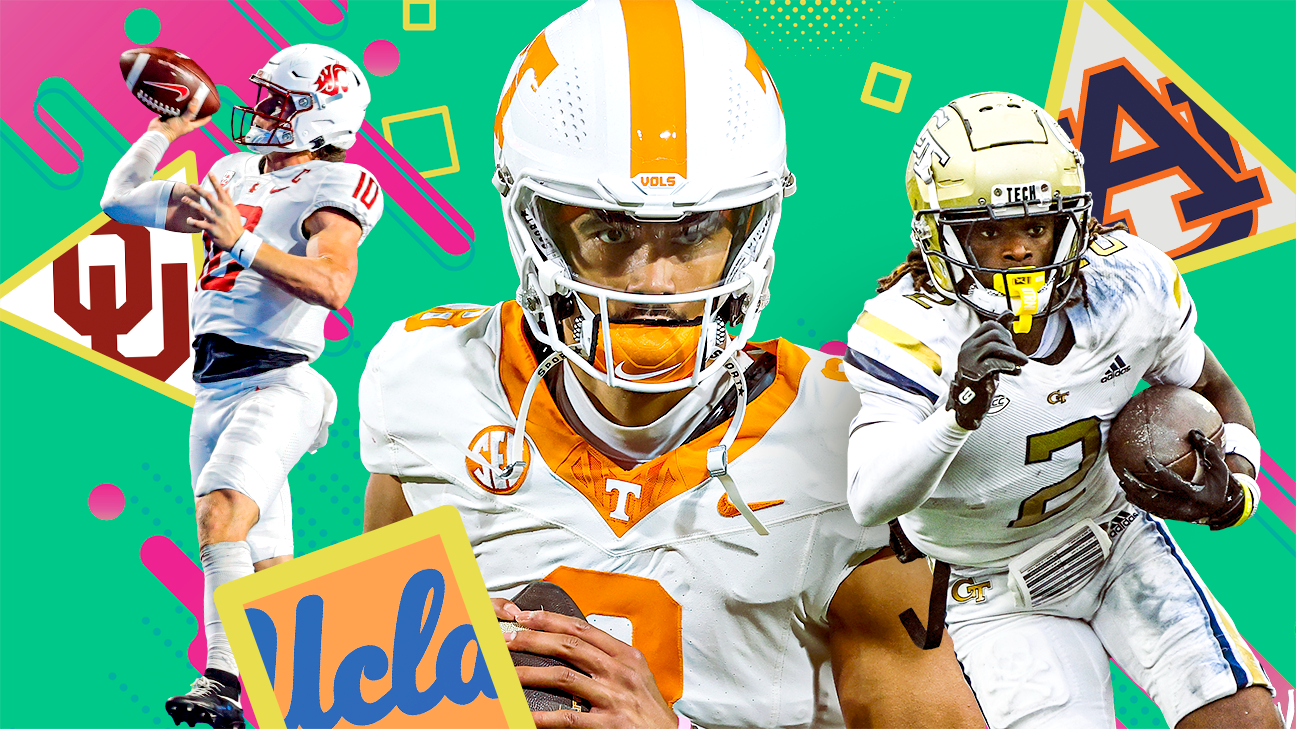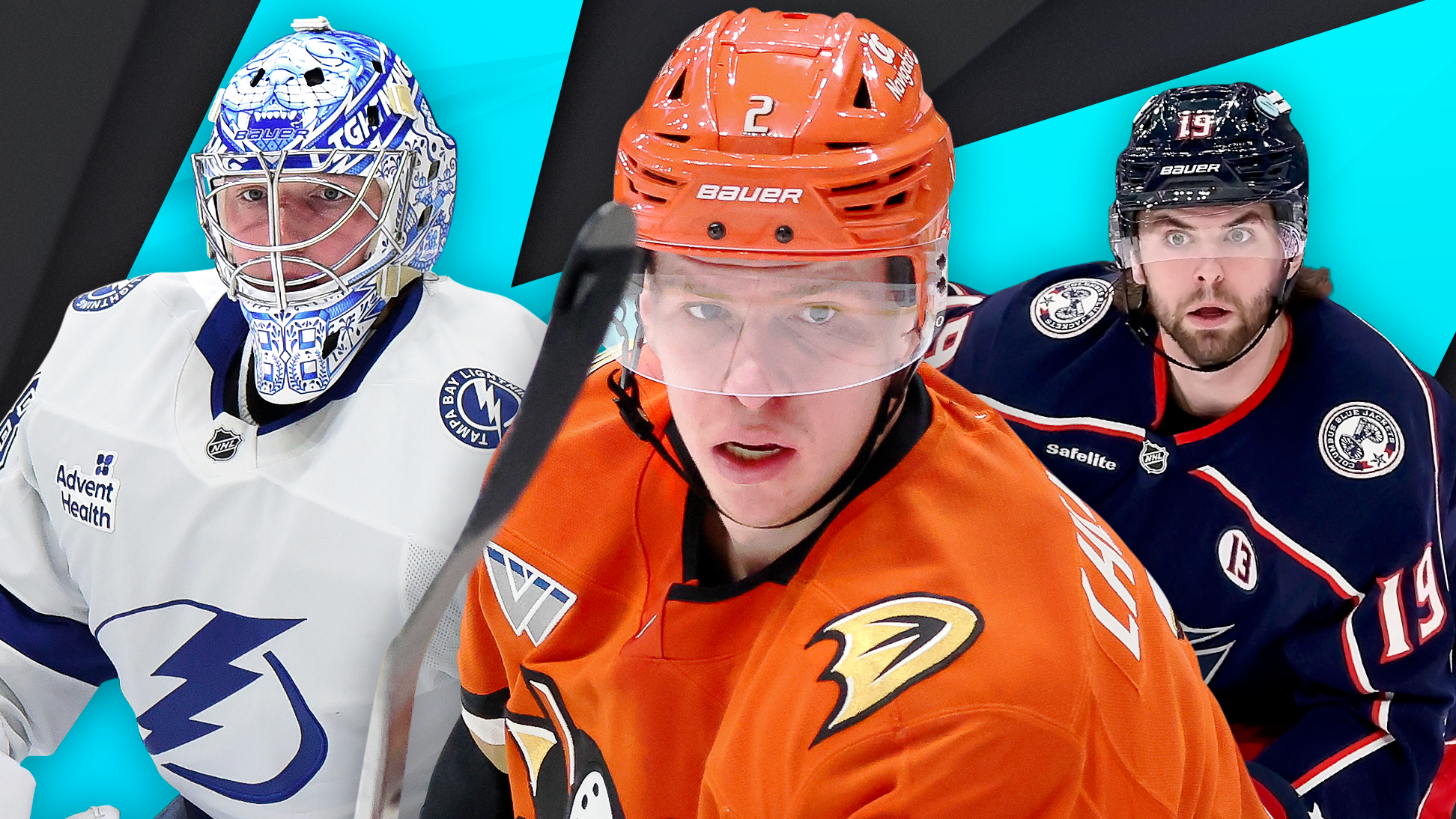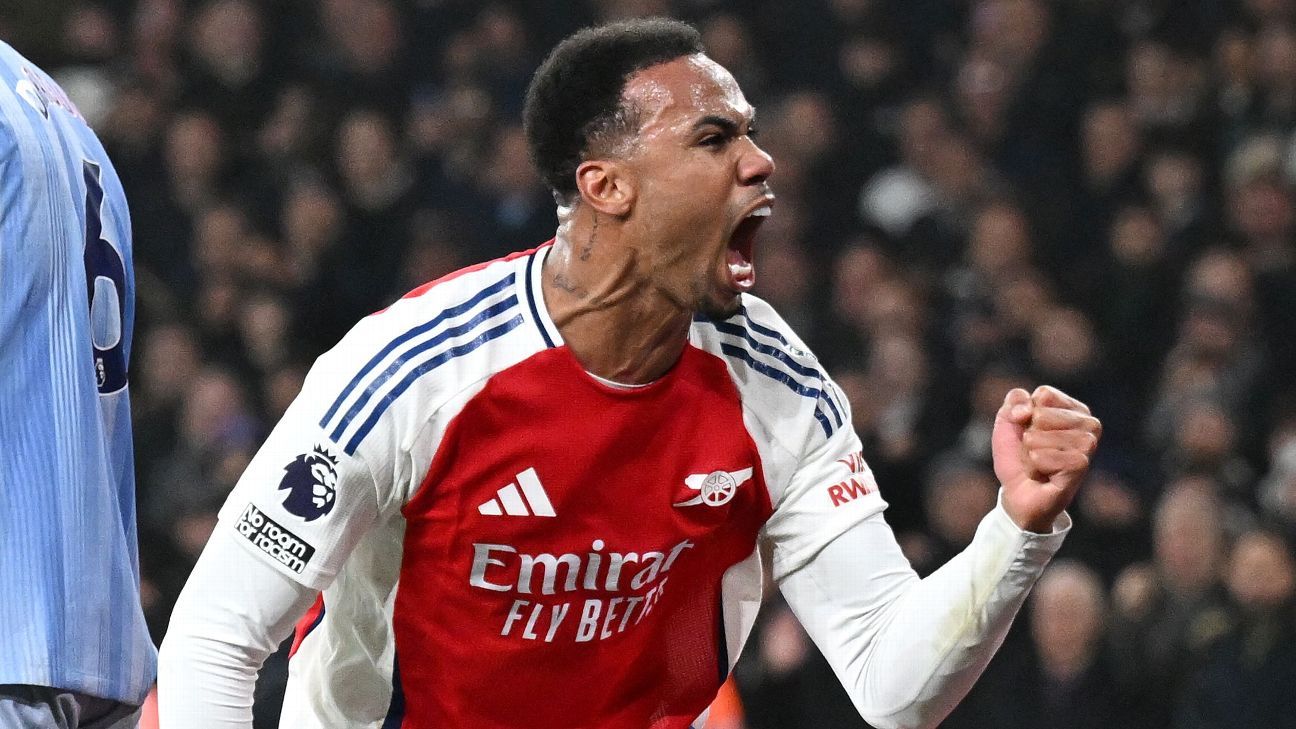Tristan H. Cockcroft
May 14, 2025, 09:50 AM ET
One of the best things about maintaining our daily Forecaster projections -- my favorite fantasy baseball task -- is discovering the many statistical quirks and anomalies that surface regularly.
In examining some of the 2025 season's early trends, which is especially pertinent now that one-quarter of the season is in the books, I took a look at what the Forecaster projections model highlights as some of the matchups of which we should be taking advantage when making our lineup decisions. After all, in ESPN standard leagues, optimizing your daily lineup is the name of the game.
A's and Rays and the time of day
Sutter Health Park and George M. Steinbrenner Field, the temporary homes of Athletics and the Tampa Bay Rays, have been every bit the hitter-friendly ballparks we expected. That said, the results at both ballparks -- and, specifically, when they have been hitter-friendly -- reveal anomalous trends.
Thus far, the Rays' minor league-turned-major league park has the game's second-highest park factor rating for home runs at 1.33, meaning that it inflates home runs 33% relative to an average environment. Meanwhile, the Athletics' temporary digs rank third (1.23), with both parks trailing only Cincinnati's Great American Ball Park (1.36) in that department. Sutter Health Park, meanwhile, is second in runs scored factor (1.26) and Steinbrenner Field is third (1.11).
Oddly, breaking those numbers down by time of day reveals that Sutter Health Park has been an extreme offensive environment (1.34 home run and 1.39 runs scored factors, both of which would rank first) in night games, but has played much more neutral during the day. Steinbrenner Field, on the other hand, has been an above-average offensive environment during the day, but has been a pitcher-friendly venue at night (0.95 home run, 0.87 runs scored factors).
Remember that all this comes with precariously small sample sizes -- 28 Rays home games and 12 on the road, 21 Athletics home games and 20 on the road, which pales in comparison to the minimum three years' worth of games I prefer for evaluating park factors. Plus, those rates should shift as the season progresses. The day/night splits we've seen so far are most likely noise, but they're at least worth keeping an eye on over the coming weeks.
Wind has been a contributing factor at Steinbrenner Field in its early weeks, but as my colleague Todd Zola pointed out during the preseason, it becomes much less so as Tampa Bay progresses into the summer months. Considering Steinbrenner Field's comparable outfield dimensions and midseason wind trends to New York's Yankee Stadium, it seems likely to remain one of the better home run parks, but neutral for almost everything else.
Rays pitchers already rank sixth in baseball in home runs allowed, and four of their five regular starters have HR/9 ratios of 1.35 or greater. Ryan Pepiot, their second most fly ball-oriented starter (behind Zack Littell), will need to recapture some of the 2024 strikeouts he has lost in order to remain a mixed league-worthy starter. Visiting fly ball pitchers to Steinbrenner Field should continue to have expectations tempered.
Sutter Health Park's question pertains to its midsummer temperatures, which can reach the 90s during the day from June through August. That alone should narrow the venue's day/night park factor splits, but it's also worth pointing out that the Athletics play 41 home games across those three months with only seven of them scheduled during the day. Keep careful tabs on which Athletics pitchers are working those Sunday games in extreme heat, as they should be avoided wherever possible.
The seven visiting teams set to play those seven day summertime Sacramento games are the Minnesota Twins, Baltimore Orioles, Cleveland Guardians, Toronto Blue Jays, Arizona Diamondbacks, Los Angeles Angels and Texas Rangers. Keep those dates in mind if you're unlucky enough to have a Pablo Lopez, Kevin Gausman or Yusei Kikuchi scheduled to work in one of those contests.
The best and the worst of streaming matchups
The Cincinnati Reds, despite their top-10 standing in runs per game, represent a surprisingly favorable matchup for opposing starting pitchers. This isn't a universal truth, as the Reds do benefit from the extreme hitter-friendly environment in home games, but they are certainly not a lineup to be universally feared.
For instance, the Forecaster projections grade the Reds as the fifth worst-hitting team against right-handed pitchers, giving them an extreme platoon split that fantasy managers can exploit. Four of the past seven right-handed starting pitchers who faced the Reds have scored 20-plus fantasy points -- the most against any team during that time span. That's good news for notable right-handed starters either scheduled (or potentially aligned) to face the Reds in the coming days, like Tanner Bibee of the Guardians, Seth Lugo of the Kansas City Royals and Freddy Peralta of the Milwaukee Brewers.
Here are the 15 most favorable specific matchups for opposing pitchers, according to the Forecaster projections:
1. Colorado Rockies on the road
2. Chicago White Sox at Rate Field
3. White Sox on the road
4. Angels on the road
5. Rays on the road
6. Pittsburgh Pirates at PNC Park
7. Washington Nationals on the road
8. Reds on the road
9. Pirates on the road
10. Angels at Angel Stadium
11. Miami Marlins at Marlins Park
12. San Francisco Giants at Oracle Park
13. Rockies at Coors Field
14. Nationals at Nationals Park
15. Seattle Mariners at T-Mobile Park
Conversely, these are the 15 worst specific matchups for opposing pitchers, making them the ones to most avoid:
1. Los Angeles Dodgers on the road
2. Dodgers at Dodger Stadium
3. Diamondbacks at Chase Field
4. Diamondbacks on the road
5. San Diego Padres on the road
6. New York Mets on the road
7. St. Louis Cardinals on the road
8. New York Yankees on the road
9. Atlanta Braves at Truist Park
10. Toronto Blue Jays at Rogers Centre
11. Chicago Cubs on the road
12. Yankees at Yankee Stadium
13. Philadelphia Phillies at Citizens Bank Park
14. Boston Red Sox at Fenway Park
15. Blue Jays on the road
Beware the better bullpens
Despite the injury issues in their rotation, one of the reasons that the Houston Astros represent one of the tougher matchups for opposing hitters is the strength, and depth, of their bullpen. Considering that more than 40% of all innings pitched these days have been amassed by relievers (and the league-wide rate has been at least that large in every season since 2018), it's important for fantasy managers to consider the strength of the bullpens behind their starters when making lineup decisions.
The Astros have among the league's widest splits between rotational and bullpen ERAs, ranking just 18th in the former (4.03) but third-best in the latter (2.80). The Forecaster grades the Astros bullpen as the second-best in MLB, which is why you'll still see middling Forecaster hitting ratings for their opponents, even on days where Lance McCullers Jr., Ryan Gusto and Colton Gordon are scheduled to pitch.
Here are the league's current five best bullpens, according to the Forecaster projections model:
1. Twins
2. Astros
3. Braves
4. Detroit Tigers
5. Mets
These are the five worst bullpens:
1. Angels
2. Nationals
3. Athletics
4. Rockies
5. White Sox
The Phillies play an entire week of games against the Rockies and Athletics beginning on Monday, all in hitter-friendly home environments. Keep that tucked away if you've got Phillies hitters, as in addition to the park factors, they'll garner the advantage of getting to beat up on both of those bad bullpens. A player like J.T. Realmuto, available in more than half of ESPN leagues, is well worth picking up in advance of next week to capitalize upon the favorable matchups.














































